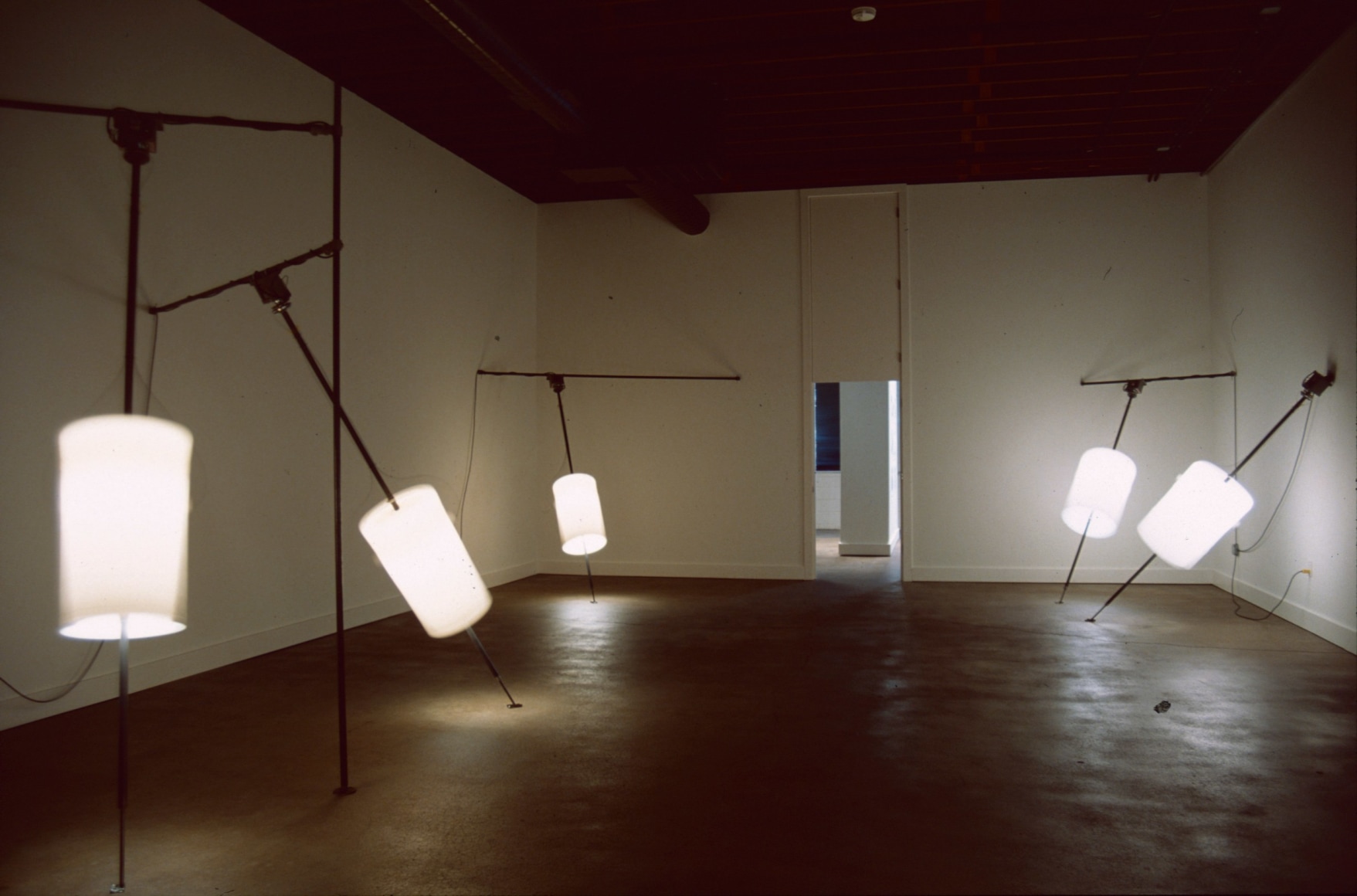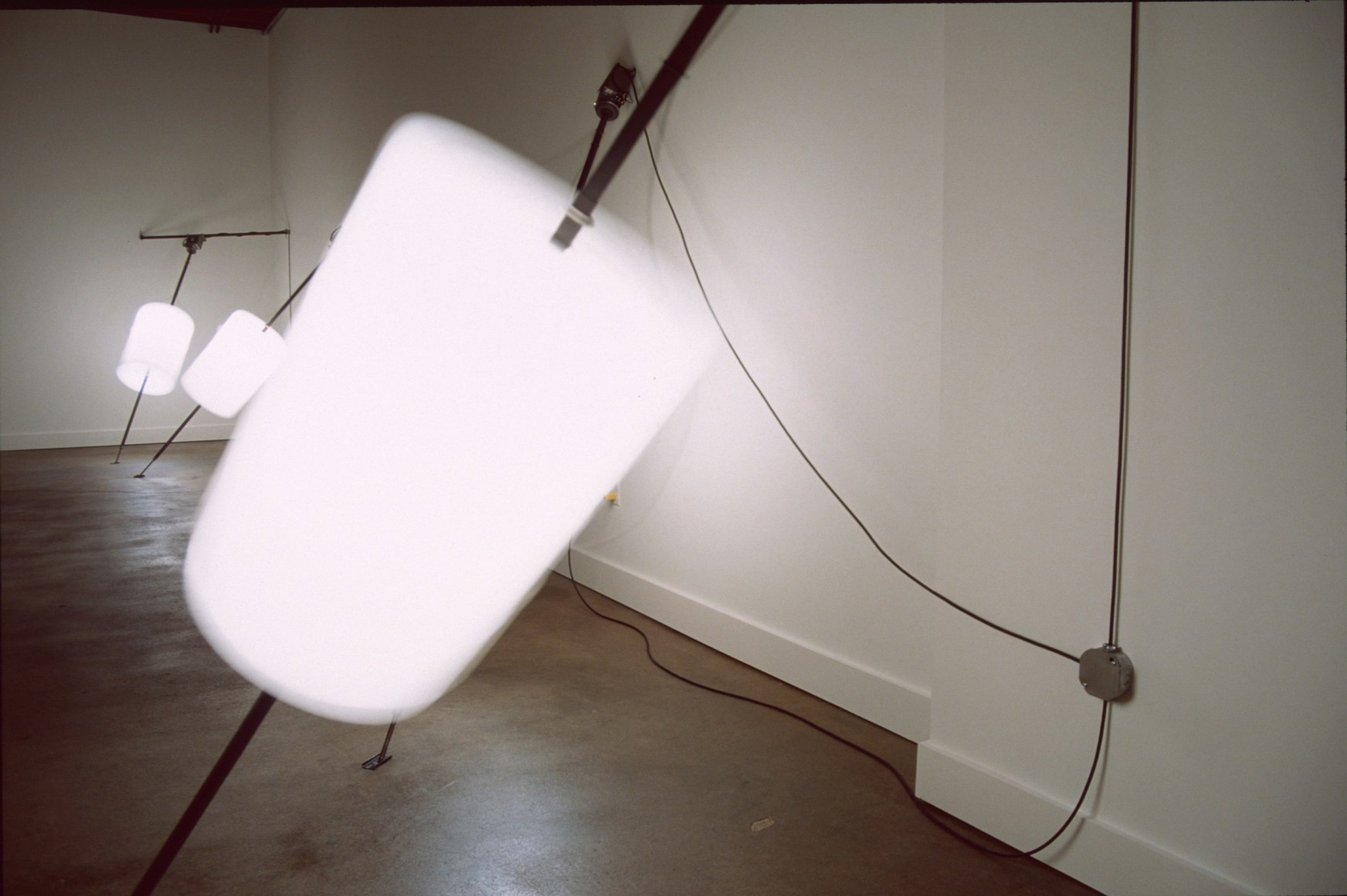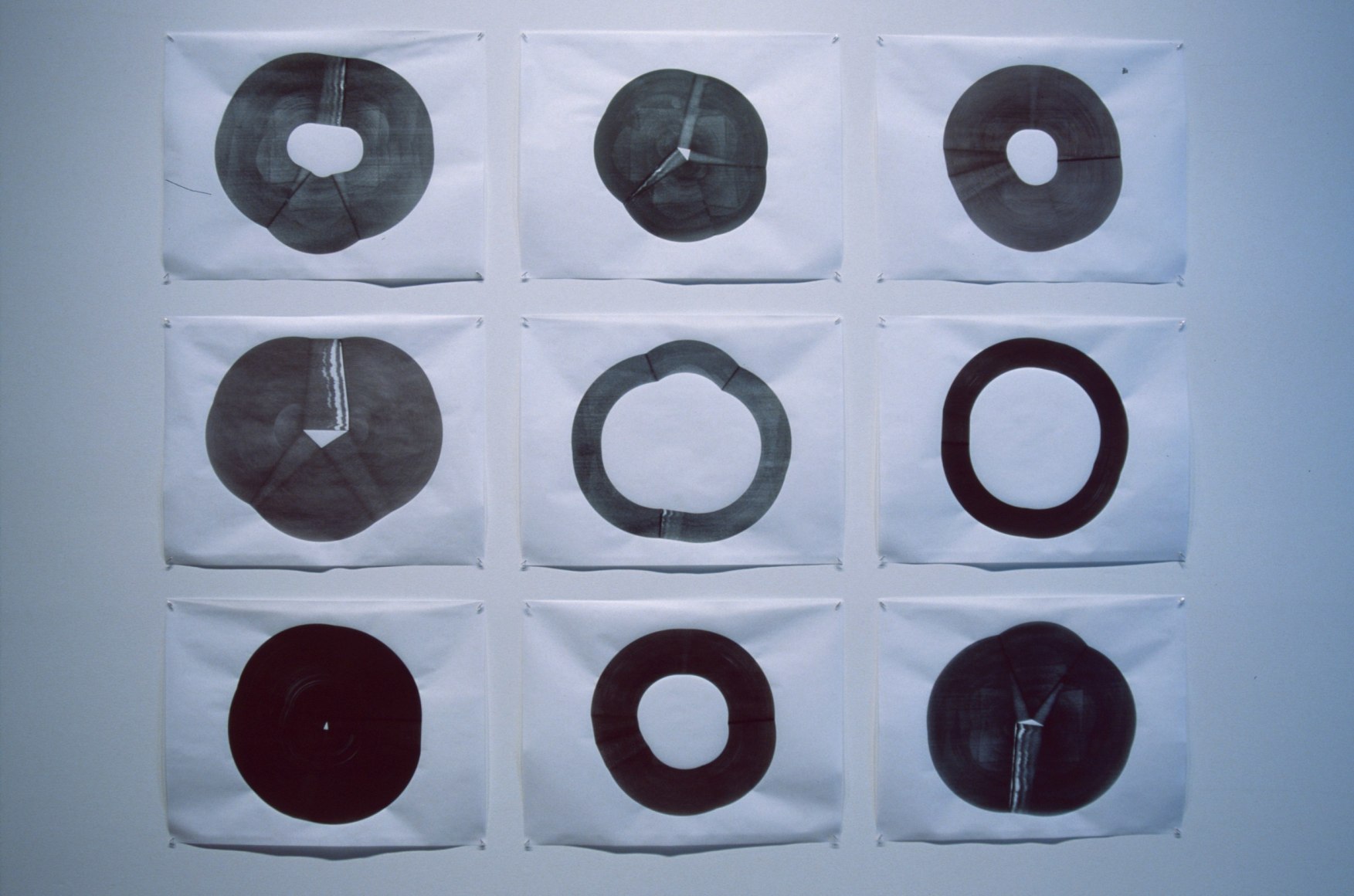Joseph Nease Gallery exhibited new sculpture and drawings by artist James Woodfill in an exhibition entitled whirl.
Translucent, internally illuminated works twirl unevenly about their axes. Objects and machines are combined and experimented with to create new machines with uncertain functions. Common materials, plastic barrels in this case, are diverted from their normal task. Reshaped and stripped of their obvious function, they become tools used to manipulate the environment. The new creations spin forward and recede, pull inward and cast shadows. Subversion is at play.
Woodfill's drawings subvert, too, this time subverting the precision of the computer. Perfectly geometric shapes become organic and amorphous as he takes advantage of the computer and plotter plus the computer's internal calculations and rounding of numbers. By utilizing this aspect of programming and printout, Woodfill creates drawings that show the artists "hand" without the work ever actually being touched.
Check out a video of this exhbition on James Woodfill's current website here
Review by Elisabeth Kirsch, Contributing Reviewer, The Kansas City Star, 10/7/1999
"James Woodfill's gently whirling, light-filled sculptures seem to have no precedent in this area. But then, upon reflection, they have little real precedent anywhere in the country.
Americans have always loved machines, motion and speed -- indeed, they seem to have invented all three. So why is it that so little sculpture in the United States is electrically driven? Alexander Calder's and George Rickey's sculptures are labeled kinetic, but these popular works rely on the wind for movement.
Europeans, from Pol Bury and Jean Tinguely in the 1950s to Rebecca Horn in the present, seem to have more fun with motor-based art than Americans, and several Asian artists such as Tatsuo Miyajima (shown at the Johnson County Community College Gallery of Art last year) love making art that moves.
"Whirl" is a fairly typical Woodfill sculpture installation. It is installed indoors in a strictly controlled setting. With its black hardware and white plastic barrels that turn over and over, protruding from the corners of the gallery, it is minimal and sophisticated.
The barrels are lighted from within and have no real function other than to perform their insistent dance. The soft humming of the motors is mesmerizing in the way that Buddhist chants can be. As one visitor noted to a companion: "Woodfill gives you a visual experience of spatial and mechanical function. He reveals the process, so it's not a mystery. Somehow it's intelligent and dumb at the same time."
If you stay with it long enough, all sense of time disappears. Ultimately "Whirl" becomes a meditation on light and movement, and its simplicity is elegance itself.
Also in the exhibit are a series of geometric, organic drawings that are designed and printed by the artist on a computer. They vary only slightly from one another and recall the severely restricted work of post-minimalists such as Gary Kuehn. They lack the poetic appeal of Woodfill's three-dimensional work, but they help round out the oeuvre as a whole and further examine the artist's sense of process".
This exhibition was also reviewed in the January - February 2000 Atlanta-based Art Papers.



